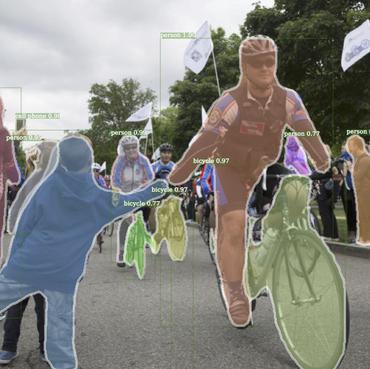Improving Network Slimming with Nonconvex Regularization
Convolutional neural networks (CNNs) have developed to become powerful models for various computer vision tasks ranging from object detection to semantic segmentation. However, most of the state-of-the-art CNNs cannot be deployed directly on edge devices such as smartphones and drones, which need low latency under limited power and memory bandwidth. One popular, straightforward approach to compressing CNNs is network slimming, which imposes $\ell_1$ regularization on the channel-associated scaling factors via the batch normalization layers during training. Network slimming thereby identifies insignificant channels that can be pruned for inference. In this paper, we propose replacing the $\ell_1$ penalty with an alternative nonconvex, sparsity-inducing penalty in order to yield a more compressed and/or accurate CNN architecture. We investigate $\ell_p (0 < p < 1)$, transformed $\ell_1$ (T$\ell_1$), minimax concave penalty (MCP), and smoothly clipped absolute deviation (SCAD) due to their recent successes and popularity in solving sparse optimization problems, such as compressed sensing and variable selection. We demonstrate the effectiveness of network slimming with nonconvex penalties on three neural network architectures -- VGG-19, DenseNet-40, and ResNet-164 -- on standard image classification datasets. Based on the numerical experiments, T$\ell_1$ preserves model accuracy against channel pruning, $\ell_{1/2, 3/4}$ yield better compressed models with similar accuracies after retraining as $\ell_1$, and MCP and SCAD provide more accurate models after retraining with similar compression as $\ell_1$. Network slimming with T$\ell_1$ regularization also outperforms the latest Bayesian modification of network slimming in compressing a CNN architecture in terms of memory storage while preserving its model accuracy after channel pruning.
PDF Abstract





 CIFAR-10
CIFAR-10
 CIFAR-100
CIFAR-100
 SVHN
SVHN